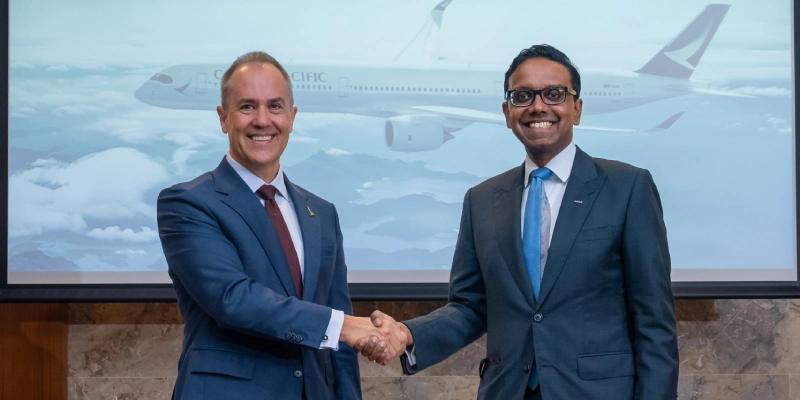Airline leaders are cautiously expressing increased confidence in Boeing’s ability to deliver aircraft that meet proper quality standards. This is a key step for the manufacturer to overcome years of reputational damage following a series of safety, regulatory, and industrial crises.
A More Optimistic Tone in the Industry
During the annual summit of the International Air Transport Association (IATA) in New Delhi, executives showed greater optimism about Boeing’s recovery. Ben Minicucci, CEO of Alaska Airlines, noted: “What we’ve seen quarter by quarter is an improvement in safety and quality. Have they reached the goal yet? No, there’s still much work to be done.”
The January 2024 incident, in which a door missing four retaining bolts blew off an Alaska Airlines Boeing 737 MAX at 16,000 feet, triggered an industry-wide crisis. This event was just the latest in a series of problems that began with the fatal crashes of two MAX aircraft in 2018 and 2019.
→ Boeing Aims to Complete 737 MAX 7 and MAX 10 Certification by Year-End
Leadership Change and New Approach
Tim Clark, president of Emirates and one of Boeing’s critics, displayed a more positive attitude this year. He highlighted the “clearer messaging” from the company’s new leadership, led by CEO Kelly Ortberg, who took office last August. Clark, whose airline has 205 pending orders for the 777X, remarked: “When I talk about cautious optimism, in recent years I hadn’t seen any of that.”
Ortberg has committed to addressing safety and quality concerns while rebuilding trust with regulators, employees, and customers. His hands-on approach, including frequent visits to factories alongside Stephanie Pope, CEO of Boeing Commercial Airplanes, has been well received.
Concrete Measures and Initial Results
Alaska Airlines has deployed its own quality inspectors on Boeing’s production lines and conducts quarterly audits. Minicucci emphasized that the company has reduced “out-of-sequence work,” a problem that contributed to the missing bolts error.
Other customers, such as United Airlines, have also noted progress. Scott Kirby, the airline’s CEO, stated that Boeing “has turned a corner.” However, challenges remain, including last year’s strike that halted much of production.
Upcoming Challenges: Certifications and Production Increases
Boeing faces critical tests in the coming months, such as a potential increase in 737 MAX production, currently capped at 38 units per month. Additionally, the 777X, originally scheduled for 2020, is now not expected until 2026.
Clark stressed: “What matters is that they deliver it and that it’s certified under Boeing’s renewed rigor: a fresh focus on aircraft construction, operational safety, and quality controls.”
Meanwhile, the industry is watching closely to see if Boeing can sustain this pace of improvement and fully reclaim its position as a leader in commercial aviation.
Related Topics
American Airlines Welcomes Airbus A321XLR to Its Fleet
Wizz Air in Talks with Airbus to Delay Delivery of 100 Aircraft
Airbus Forecasts 45% Growth in Global Freighter Fleet by 2044
Airbus and Cathay Join Forces to Boost Sustainable Aviation Fuel

Plataforma Informativa de Aviación Comercial con 13 años de trayectoria.




